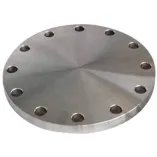-
Cangzhou Yulong Steel Co., Ltd.
-
Phone:
+86 13303177267 -
Email:
admin@ylsteelfittings.com
- English
- Arabic
- Italian
- Spanish
- Portuguese
- German
- kazakh
- Persian
- Greek
- French
- Russian
- Polish
- Thai
- Indonesian
- Vietnamese
- Zulu
- Korean
- Uzbek
- Hindi
- Serbian
- Malay
- Ukrainian
- Gujarati
- Haitian Creole
- hausa
- hawaiian
- Hebrew
- Miao
- Hungarian
- Icelandic
- igbo
- irish
- Japanese
- Javanese
- Kannada
- Khmer
- Rwandese
- Afrikaans
- Albanian
- Amharic
- Armenian
- Azerbaijani
- Basque
- Belarusian
- Bengali
- Bosnian
- Bulgarian
- Catalan
- Cebuano
- China
- China (Taiwan)
- Corsican
- Croatian
- Czech
- Danish
- Esperanto
- Estonian
- Finnish
- Frisian
- Galician
- Georgian
- Kurdish
- Kyrgyz
- Lao
- Latin
- Latvian
- Lithuanian
- Luxembourgish
- Macedonian
- Malgashi
- Malayalam
- Maltese
- Maori
- Marathi
- Mongolian
- Myanmar
- Nepali
- Norwegian
- Norwegian
- Occitan
- Pashto
- Dutch
- Punjabi
- Romanian
- Samoan
- Scottish Gaelic
- Sesotho
- Shona
- Sindhi
- Sinhala
- Slovak
- Slovenian
- Somali
- Sundanese
- Swahili
- Swedish
- Tagalog
- Tajik
- Tamil
- Tatar
- Telugu
- Turkish
- Turkmen
- Urdu
- Uighur
- Welsh
- Bantu
- Yiddish
- Yoruba

Dec . 24, 2024 10:04 Back to list
Understanding the Functionality and Design of CS Concentric Reducers in Piping Systems
Understanding CS Concentric Reducers A Comprehensive Guide
In the realm of piping systems, the functionality and efficiency of fluid flow depend significantly on the components used in the arrangements. One of the critical components in these systems is the concentric reducer, especially in the context of carbon steel (CS) material. This article seeks to present an in-depth understanding of CS concentric reducers, their design, applications, advantages, and considerations in usage.
What is a CS Concentric Reducer?
A concentric reducer is a type of fitting used in pipe systems to transition between two different pipe diameters. Unlike eccentric reducers, which are offset, concentric reducers maintain a central alignment, ensuring a smooth transition. The “CS” in its name indicates that it is made from carbon steel, a material widely used in various industrial applications due to its strength and durability.
Concentric reducers are available in various sizes, allowing for a seamless connection between pipes of different diameters. This transition is crucial in many applications, such as in the oil and gas industry, water supply systems, and chemical processing.
Design and Construction
The design of a CS concentric reducer is relatively straightforward, consisting of two ends—a larger diameter (the inlet) and a smaller diameter (the outlet)—connected by a conical section. The reducer tapers uniformly, ensuring the fluid flows smoothly between the two different diameters.
The construction of these reducers is typically robust, allowing them to withstand high pressure and temperature variations. The carbon steel used is often treated or coated to improve corrosion resistance, extending the life of the component in harsh environments. It can also be manufactured in various designs to meet specific standards, including ANSI and ASME specifications.
Applications of CS Concentric Reducers
CS concentric reducers are versatile and find applications across numerous industries. Here are some key areas where they are commonly employed
1. Oil and Gas Used extensively in pipelines transporting oil, gas, and other hydrocarbons, where maintaining pressure and flow efficiency is crucial. 2. Water Treatment In water distribution systems, concentric reducers help in managing flow rates and connecting different sections of pipelines.
3. Chemical Processing The chemical industry utilizes these reducers to connect various process lines, ensuring safe and efficient fluid transfer.
4. HVAC Systems In heating, ventilation, and air conditioning systems, concentric reducers help in optimizing airflow and enhancing system performance.
cs concentric reducer

5. Manufacturing In production facilities, they connect different equipment and piping in a seamlessly integrated manner.
Advantages of Using CS Concentric Reducers
- Improved Flow Efficiency The smooth transition in shape helps in reducing turbulence, thus enhancing the flow efficiency in the piping system. - Robustness Made from carbon steel, these reducers are capable of withstanding harsh conditions, making them suitable for high-pressure applications.
- Cost-Effectiveness Compared to other materials, carbon steel offers an economical solution without compromising on strength and durability.
- Versatility Their design allows them to be used in various applications, providing flexibility in system design.
Considerations When Using CS Concentric Reducers
While CS concentric reducers offer numerous advantages, certain considerations should be taken into account
- Compatibility with Fluids Ensure that the carbon steel is compatible with the fluids being transported, particularly if they are corrosive in nature.
- Installation Proper installation is key to maintaining flow efficiency and preventing leaks. Misalignment can lead to increased wear and tear.
- Maintenance Regular inspections should be conducted to ensure the integrity of the system, especially in environments prone to erosion or corrosion.
Conclusion
CS concentric reducers are indispensable components within various piping systems. Their ability to facilitate smooth transitions between different pipe sizes enhances system efficiency and performance. Understanding their design, applications, and considerations for use can significantly impact the effectiveness of industrial processes. As industries continue to evolve, the role of efficient piping components like concentric reducers remains paramount in achieving reliable fluid flow management.
Latest news
-
ANSI 150P SS304 SO FLANGE
NewsFeb.14,2025
-
ASTM A333GR6 STEEL PIPE
NewsJan.20,2025
-
ANSI B16.5 WELDING NECK FLANGE
NewsJan.15,2026
-
ANSI B16.5 SLIP-ON FLANGE
NewsApr.19,2024
-
SABS 1123 FLANGE
NewsJan.15,2025
-
DIN86044 PLATE FLANGE
NewsApr.19,2024
-
DIN2527 BLIND FLANGE
NewsApr.12,2024
-
JIS B2311 Butt-Welding Fittings LR/SR 45°/90° /180°Seamless/Weld
NewsApr.23,2024











